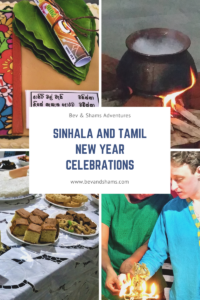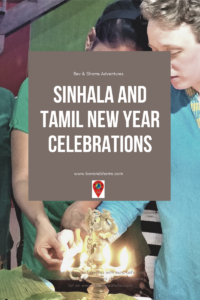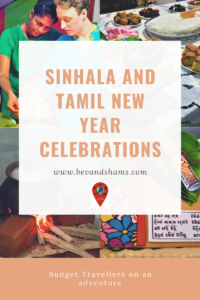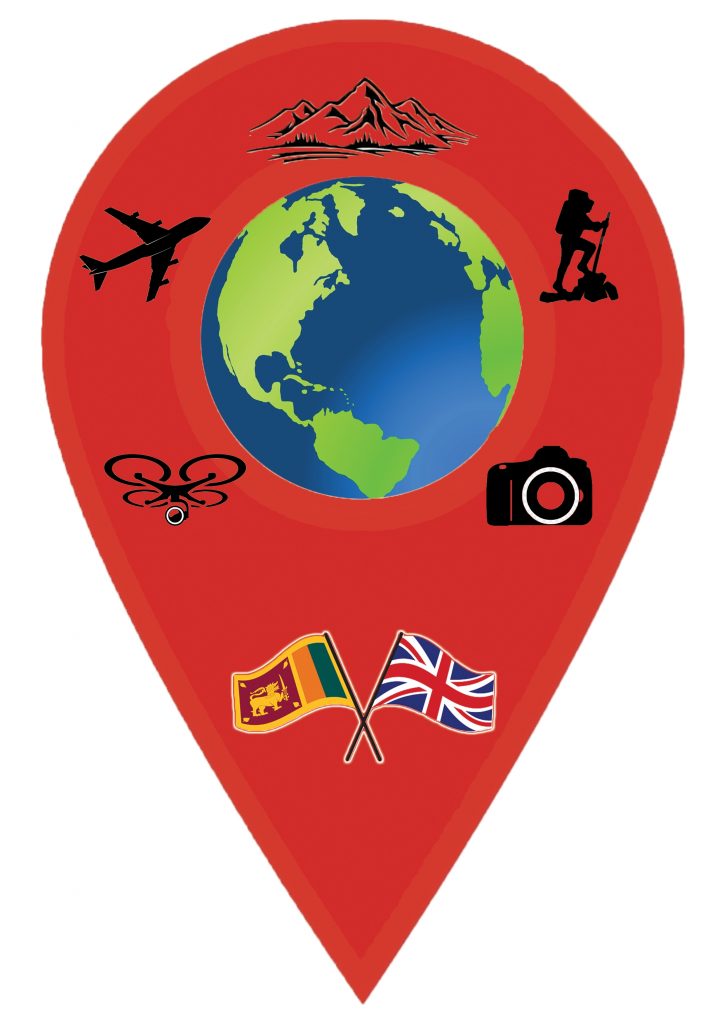Sinhala New Year Celebrations
Sinhala New Year was my first experience of a traditional celebration in Sri Lanka, but for Shams on the other hand, she has celebrated from birth. Tamil Sri Lankans, will celebrate Tamil New Year on the same day. Sri Lankans call this day, Sinhala and Tamil New Year.
Sinhalese New Year celebrations are based on auspicious times given by astrologers. The New year celebrations in Sri Lanka starts when the sun moves from Pisces (Meena Rashiya) to Aries (Mesha Rashiya). This marks the start of “Aluth Awurudda” . This is an annual celebration on the 14th April. Everyone enjoys the festivities and begins the new year in a joyous and positive mood.
Sinhala New Year Aluth Awurudda Table
A traditional Sinhalese household celebrating Sinhala New Year would consist of sweet meats and special dishes. Let’s start with ” Kokis”, our favourite food, a deep fried sweet snack made out of rice flour and coconut milk. Asmi is another fabulous sweet you’ll find on the table; this too is a very tasty fried food made out of rice flour , cinnamon leaves and coconut milk. You can also find many more foods such as, konda kevum, mung-kevum, bibikkan (which is a sweet cake) murukku, fish Embul-Thiyal (sour fish curry), vadai, and fruit.
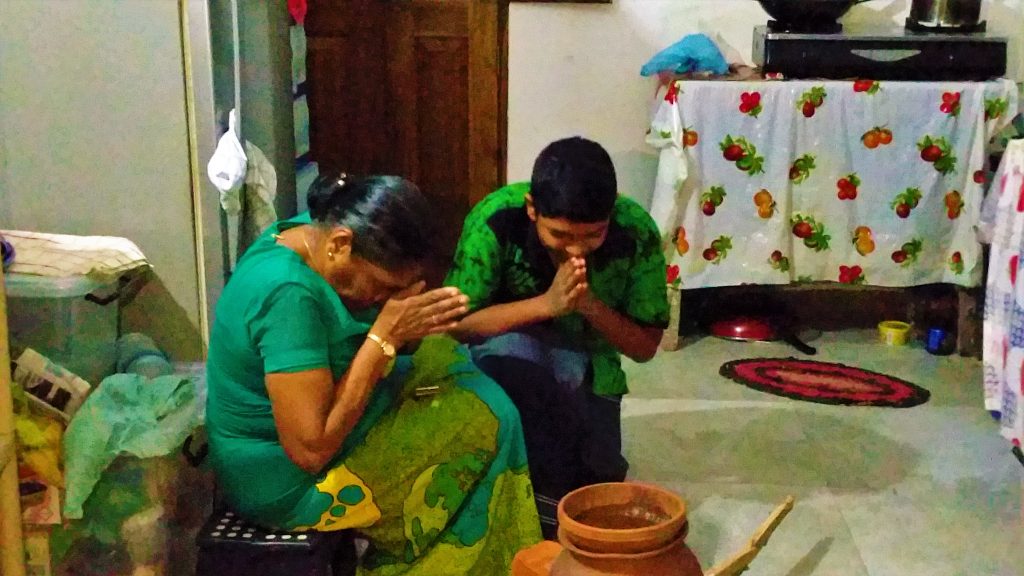
Sinhala and Tamil new year customers are very different and celebrated slightly differently. Although both celebrations consists of yummy food, traditions, and fun festive games. On New Years day, there are specific times to cook the food, eat the food and specific colours to wear when cooking and eating. This also may change from year to year based on the auspicious times provided by the astrologers.
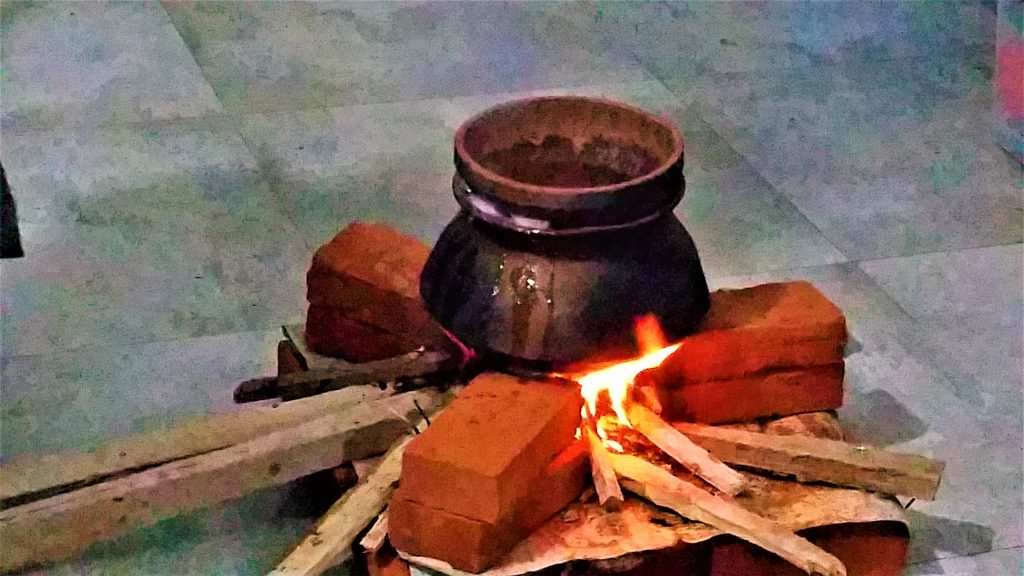
Table of Contents
Prior to new year:
As the sun exits Meena, you’ll normally take your final bath for the old year. As punya kalaya (inauspicious time) begins, everything shuts down and families will partake in spiritual activities by visiting temples.
Dawn of the new year:
Firecrackers and sound of the rabana (one-sided traditional drum) signals the dawn of the new year and families will commence their activities.
Lighting of the hearth (lipa gini melaweema) :
Before lighting the hearth, the lady of the house will worship the pot three times. The Stove is then lite by the lady of the house, facing in the correct direction, and the kiri bath (milk rice) is cook in a pot over the lit fire, this signifies prosperity. Astrologers determine the direction to face, which can change from year to year. All members of the family from the youngest to the eldest will witness the milk bubbling from the pot.
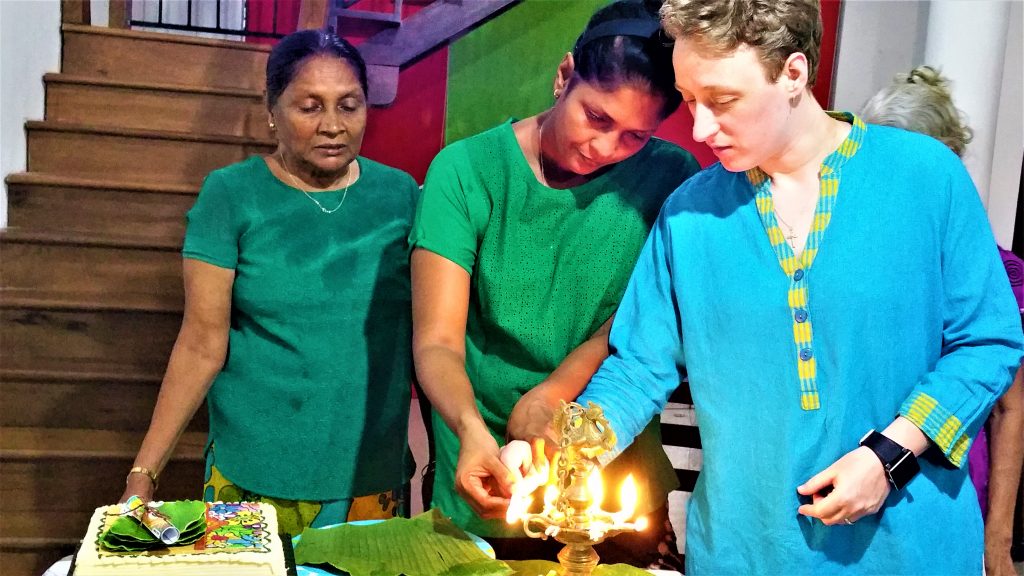
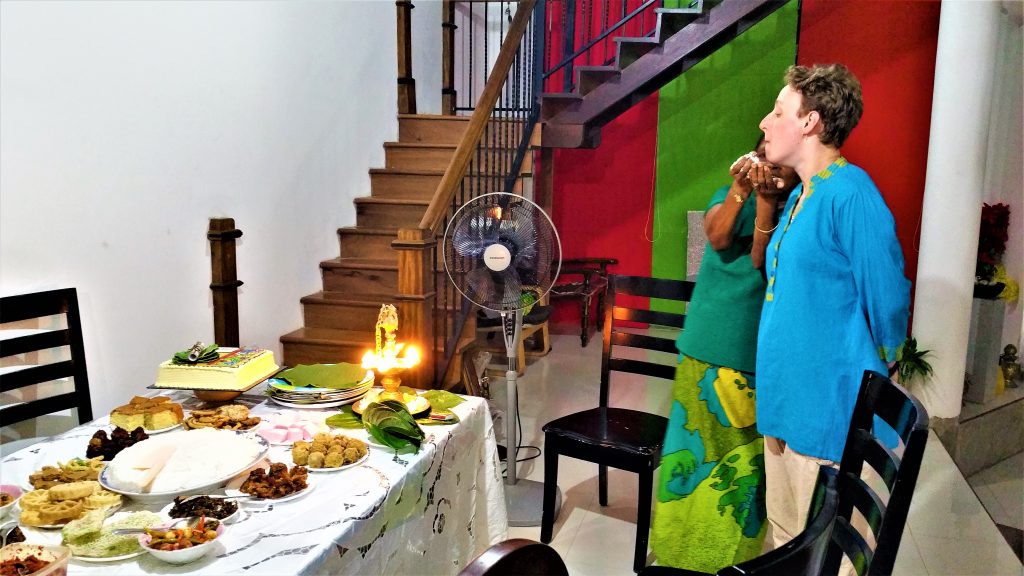
First meal at the Awurudda table:
At the table you will find the many different sweet foods mentioned above along with the recently cooked kiri bath (milk rice). The head of the family will start the meal by feeding each member of the family a little bit of the ” kiri bath” and the family will then continue the meal by sitting around the table enjoying the delicious food.
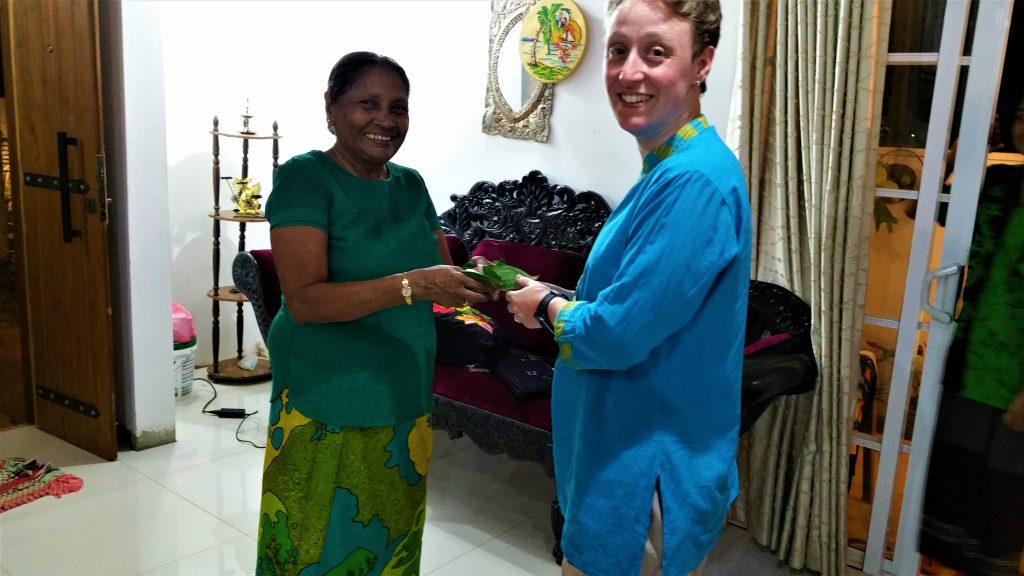
Performing rituals and exchanging money:
After the meal, at an auspicious time, the children show respect to their elders by offering sheaves of betel to their elders who then proceed to bless them. After the blessing , the elders in return would give them money and commence the first financial transaction (ganu denu) of the new year. The ganu denu was dont differently in ancient times. The women of the house would drop a new coin wrapped in clean cloth into a well and draw a bucket of water. She would then fill a bottle with that water and keep it for the year. The water would continue to be renewed every Sinhala New Year.

Friendly exchanges of sweets among neighbours:
It is tradition to exchange the sweet treats and other Sinhala New Year goodies among your neighbours, following your family rituals. Traditionally the plates should be returned empty. Next, families visit their relatives or friends visit friends using this time to forget any arguments or resentments and to strengthen relationships during this season.
This is a great opportunity to get involved in the culture, and we thoroughly enjoyed the celebrations.
After all the celebrations, now it is time to explore the rest of Sri Lanka, with this adventurous 6 day trip going on safari, surfing, and visiting the sacred sites that Sri Lanka have to offer.
Your Say
Have you celebrated Sinhala New Year? How did you feel during the celebrations? Would you like to celebration Sinhala New Year? We would love to hear from you, just leave a comment below.
Continue your Sri Lankan travel planning, with these useful posts:
- Best places to visit in Sri Lanka
- How to take a safari at Yala National Park
- Staple food of Sri Lanka
- Temple etiquette – Do’s & Don’ts
- Travel guide to Sri Lanka
- Things to do in Galle
- How to apply for a tourist visa to Sri Lanka
- 7 best beaches in Sri Lanka
- Cheap places to eat in Colombo
- Best places to stay in Colombo
There may be affiliate links within this article, using these links will not cost you anything extra.
